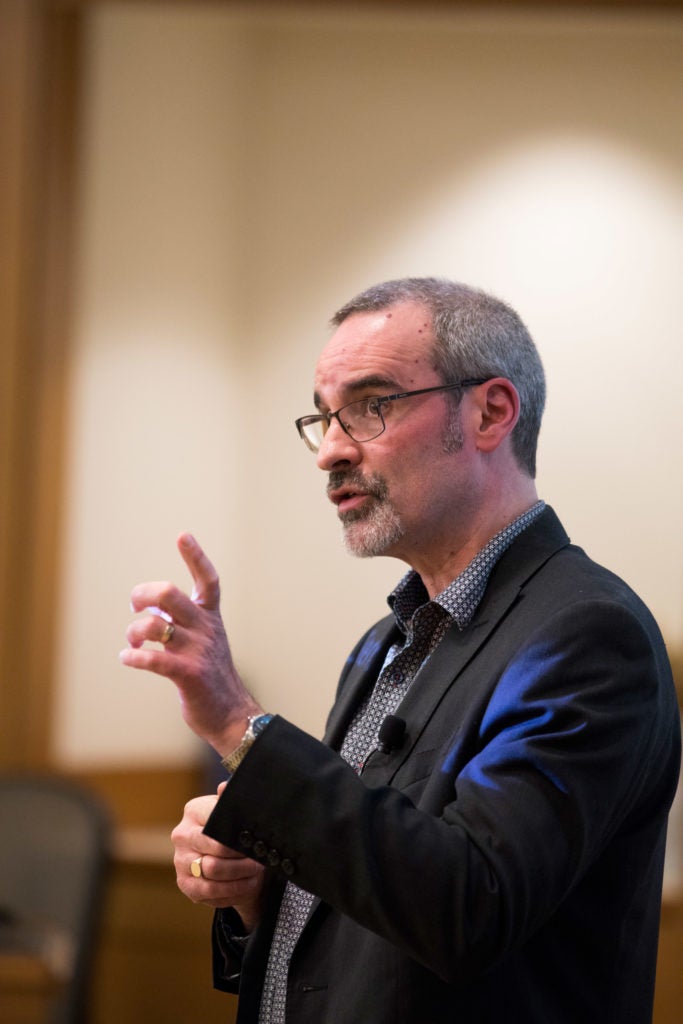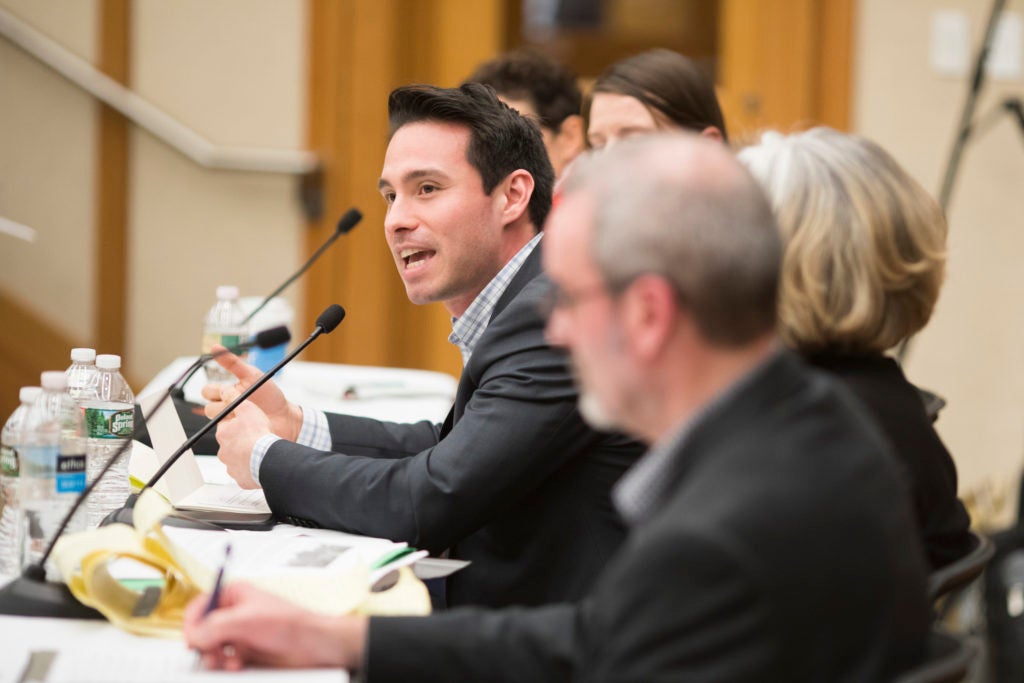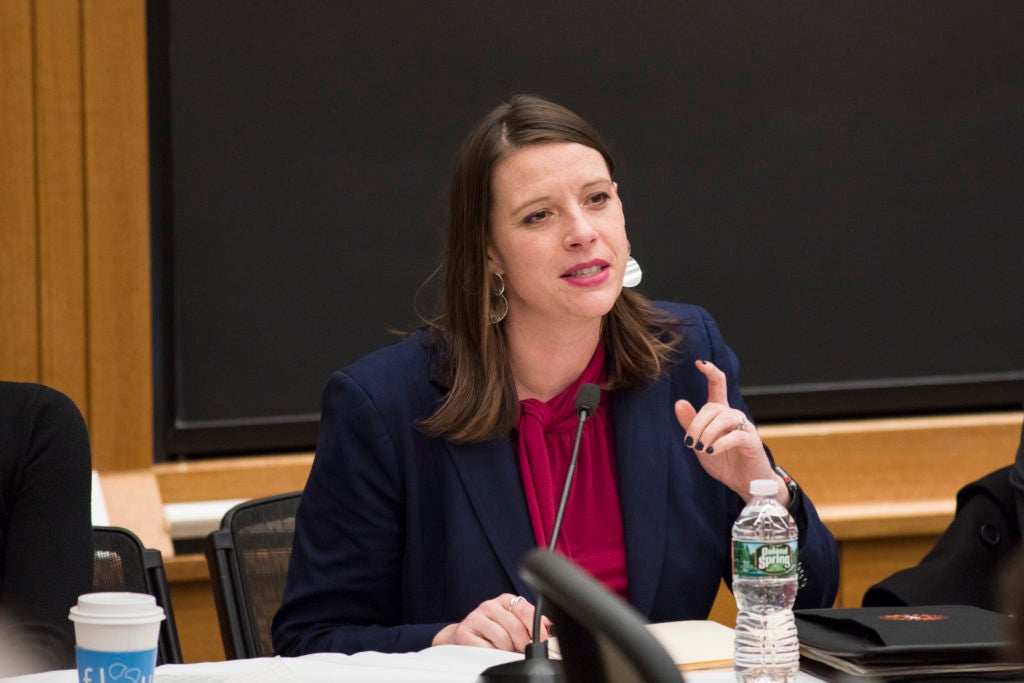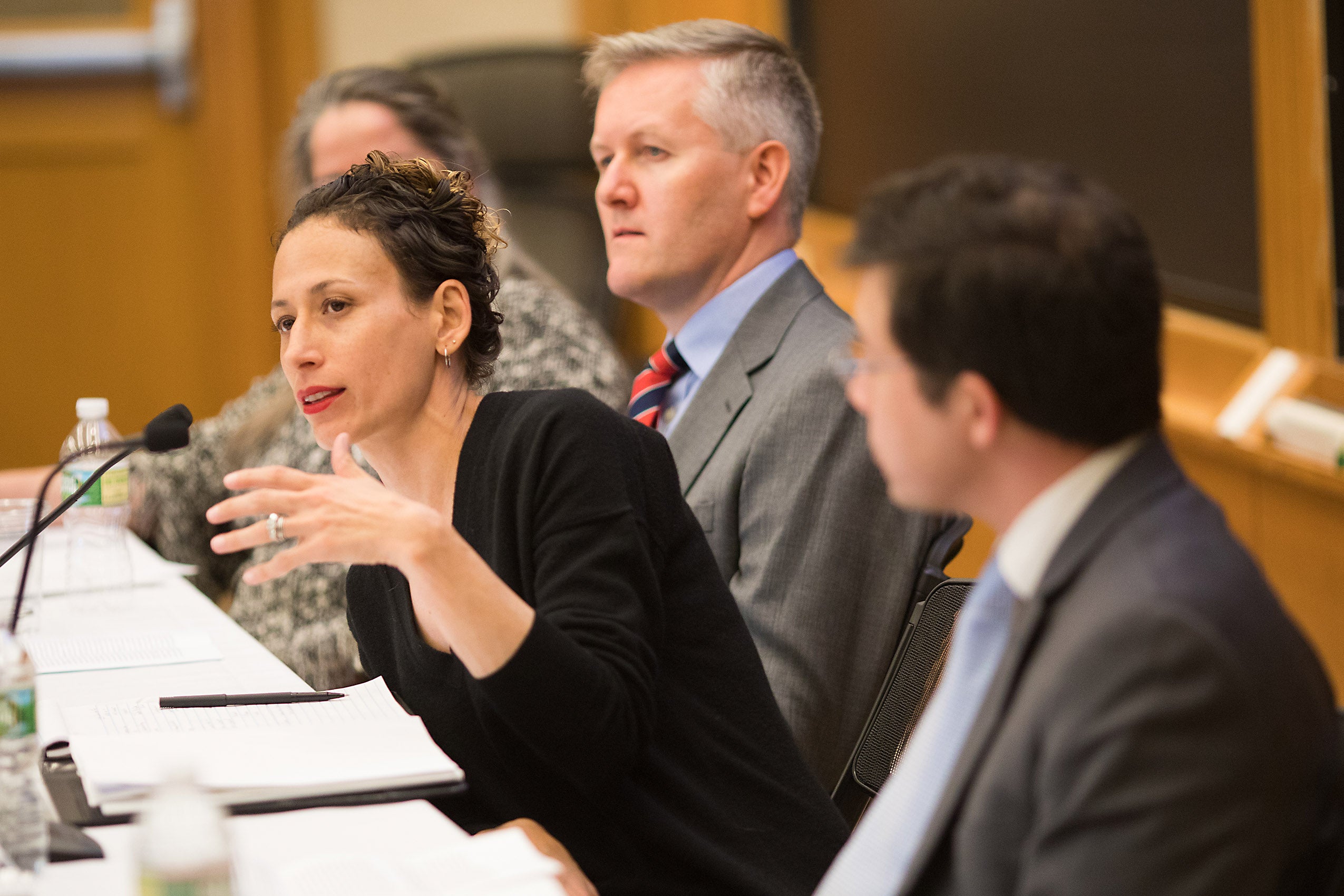By Victoriya Levina and Basil Williams
Sydnee Robinson, a 2L at Harvard Law School and chair of the 2019 Harvard Negotiation Law Review symposium, and Shannon Schmidt, a Harvard Divinity School student, first came together to discuss their shared interest in restorative justice in summer of 2018. They were drawn to the topic because of the ways in which it represents a paradigm shift in how to view and respond to harmful behavior. An evolving concept and growing field of practices, restorative justice focuses on responding to harm through facilitated dialogue. By the fall, Robinson and Schmidt had teamed up to help organize HNLR’s three-day event.
The 2019 Harvard Negotiation Law Review (HNLR) symposium, “Redressing Harm Through Restorative Justice,” held February 5-7 at Harvard Law School, brought together students, faculty, staff, ADR practitioners, attorneys, and members of the greater Boston community to explore various applications of restorative justice within the criminal justice system in the United States and in post-conflict systems around the world. The symposium, which focused on the challenges of addressing power imbalances and trauma through implementation of restorative practices within communities, featured remarks, panel discussions, an interactive workshop, and a film screening.
As a journal, the Harvard Negotiation Law Review (HNLR) has long been interested in exploring creative methods of addressing harm, particularly those that go beyond punitive justice and attempt to restore relationships and communities. In 2015, HNLR hosted a symposium on the theory and practice of restorative justice.
“The HNLR Symposium felt like a special opportunity to bridge the gap between experts and community members,” said Schmidt. “While our speakers taught us about the powerful work they are doing in fields related to restorative justice, members of the audience actively engaged in these topics on the level of their own experiences in their own communities.”
The symposium opened with remarks from Dr. Carl Stauffer, whose transitional justice work has taken him to 20 African countries and 15 other countries in the Caribbean, Middle East, Europe, Asia, Central America, and the Balkans. Stauffer recalled his experience working with refugees who fled the civil war in Sierra Leone. “Stories of trauma were heavy and hard to carry,” he said while discussing how a formal justice process was driving a wedge in the civilian population instead of facilitating healing and reconciliation. He described the power of a ground-up restorative process that, since 2008, has created a meaningful change in Sierra Leone by harnessing the social, cultural, and spiritual power of the affected communities. Restorative justice “is evolving into a social movement,” he said. It has inspired participants to work toward a “cultural shift of how restorative justice can be used in the future,” he added.

The first panel focused on restorative justice in the U.S. criminal context. One of the central questions was: To what extent should the state be involved in restorative justice processes? Stauffer moderated the panel, which featured Pierre Berastain, the director of the Office of Sexual Assault Prevention and Response at Harvard University; Erin Freeborn, the executive director of Communities for Restorative Justice; Chris Moser, of counsel to Henrichsen Siegel, which focuses on employment discrimination, sexual harassment, Title IX, whistle-blower retaliation, and civil rights violations; and Kaia Stern, the co-founder and director of the Prison Studies Project. The four panelists drew from their diverse experiences and educated attendees about pioneering movements to address harm through restorative processes in the U.S. criminal justice context. The majority of the discussion was led by questions from the audience.


“It was inspiring to see so many people from the local community come and share their experiences and excitement over implementing restorative justice here in Massachusetts,” observed Amy Weintraub ’19. Weintraub added, “The presentations clearly resonated with a lot of guests and provoked thoughtful dialogue.”
An interactive workshop led by the Symbolic Reparations Research Project provided an opportunity for attendees to work in teams and design a strategy for implementing symbolic reparations. Attendees learned about the 2009 judgment of the Inter-American Court of Human Rights in González et al. v. Mexico, a case in response to a “pattern of gender-related violence” anchored in a “culture of discrimination” against women. Attendees had the opportunity to imagine and design reparatory procedures before contrasting their ideas with (and critiquing) the approach actually taken in the case’s aftermath.
The second panel explored case studies in using restorative practices to address large-scale, communal conflict and harm. The three panelists shared insights from their experiences in the contexts of Sierra Leone, Northern Ireland, and the United States (particularly the Greensboro Truth and Reconciliation Commission and the Maine Wabanaki-State Truth and Reconciliation Commission). Moderated by Andrew Mamo, a clinical instructor at the Harvard Negotiation and Mediation Clinical Program and a lecturer on law at Harvard Law School, the panel featured Libby Hoffman, the founder and president of Catalyst for Peace; Dr. Ronán Feehily, a practicing arbitrator and mediator, and senior lecturer at University of Canterbury; and Thalia González, a nationally recognized expert in restorative justice and associate professor at Occidental College. One of the central questions involved fit: what makes restorative justice appropriate, and what might make it inappropriate, in the face of communal and historical harm? The panelists also discussed how various dispute resolution practices—including mediation—might address deep-seated power dynamics within communities.
“What resonated with me was the way that mediation plays such a natural role in supporting and enhancing restorative justice,” recalled Ysabelle Reyes ’19, a mediator with Harvard Mediation Program. Feehily’s discussion of mediation during and after the Troubles in Northern Ireland stood out for Reyes. Hearing about how young people remember the past reminded Reyes “of the complicated relationships that people can have with their national history and individual identities, and of the role that restorative justice plays in understanding those relationships. Restorative justice is not, and was never intended to be, a cure-all, but it can be used to own our narratives.”
The symposium concluded with a screening of the award-winning film “Fambul Tok” (Family Talk), which documents the efforts of a locally owned and led reconciliation program in Sierra Leone. The discussion was led by Libby Hoffman, producer of “Fambul Tok.” In the film, both victims and perpetrators of Sierra Leone’s brutal civil war come together for locally led, post-war truth-telling and forgiveness ceremonies, which are rooted in indigenous traditions. Through this process, Sierra Leoneans began to build sustainable peace at a grass-roots level and create opportunities for healing and restoring dignity within local communities in the aftermath of the nation’s civil war—achievements that similar efforts, including those led by the country’s own Truth and Reconciliation Commission, were unable to reach.
Robinson, HNLR’s Symposium Chair, noted that the film and discussion highlighted how restorative justice “focuses on restoring the harmed parties and the relationship that was severed in the way that those involved need to be restored.” Robinson added: “Learning more about the criteria of when a dispute is ready for restorative justice was incredibly helpful and really aligned with the idea that this type of process should depend upon the parties involved and truly revolve around that timeline, not one imposed by people not involved in the dispute or by the State.”
